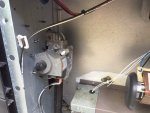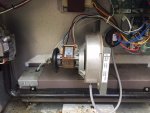Hey everyone, I have a 3 year old Hayward H400FDN heater that all of the sudden started not working with the IF light flashing.
I have done some searches and cannot come up with anything. This model does not have a pilot light. My pool builder told me to look for spider webs, but when I open the panel I don't see any spider webs.
Can anyone offer me any suggestions of things to look for? Any help would be greatly appreciated.
Here are a few pics of

I have done some searches and cannot come up with anything. This model does not have a pilot light. My pool builder told me to look for spider webs, but when I open the panel I don't see any spider webs.
Can anyone offer me any suggestions of things to look for? Any help would be greatly appreciated.
Here are a few pics of








